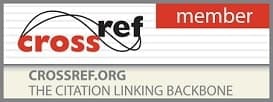Printed Journal | Refereed Journal | Peer Reviewed Journal
2022, Vol. 2, Issue 2, Part A
Natural gums and mucilage as gelling agents in topical gel formulation
Author(s): Krishna Kumari J, Bandaru Hemanth kumar and Prasanthi D
Abstract: The study was conducted to evaluate the gelling efficiency of natural gums (tamarind seed gum) and mucilage (Moringa mucilage) using ibuprofen as model drug. Topical drug delivery (TDS) eliminates the first pass metabolism and improves bioavailability and gives good results compared against oral delivery system. Hydrogels are dispersions of network of polymer chains in water as colloidal gels. Ibuprofen is used to relieve pain and anti-inflammation, it was chosen as a model drug in the preparation of hydrogel for site targeted action and to avoid side effects. Physical properties like solubility, swelling index, loss on drying, flow properties were evaluated, chemical characterization of isolated gum and mucilage revealed that polysaccharides are present. Ibuprofen topical gels with natural gum (tamarind seed gum (1-7%), mucilage moringa mucilage (2-8%) were compared with official xanthan gum (1-4%), guar gum (1-3%) as natural gelling agents and HPMC K4M (1-6%), HPMC K100M (1-6%) and sodium alginate (2-6%) as semi synthetic gelling agents. Drug and excipients are compatible with each other by FTIR studies. The prepared gel formulations were evaluated for clarity, homogeneity, spreadability, drug content, in-vitro diffusion, ex-vivo permeation and stability studies. All formulations have shown better physicochemical properties. Based on the maximum percentage of drug release ibuprofen topical gels by natural polymers tamarind seed gum (5%), moringa mucilage (8%), xanthan gum (4%), guar gum (3%) was optimized. And semi synthetic polymers HPMC K4M (4%), HPMC K100M (3%), sodium alginate (6%) was optimized. NF10 formulation with guar gum (3%) is optimized based on the percentage of drug release (27.0±0.14%) for 8 hrs, flux of (427.2±0.09µg/cm2/hr), cumulative amount of drug permeated Q8 (329±1.53µg/cm²) and permeability coefficient of (17.08±1.04 ×10-3cm/hr) when compared with tamarind gum (5%), NF1 (23.8±0.13%), (290±1.04µg/cm²), (376.6±0.04µg/cm2/hr), (15.04±0.03×10-3cm/hr) and moringa mucilage (8%), NF3 (14.3±0.19%), (175±0.90µg/cm²), (227.1±0.03µg/cm2/hr), (9.08±0.02×10-3cm/hr). The drug release pattern was found to follow first order kinetics and korsemayer peppas release mechanism with Fickian diffusion release. Formulations were found to be stable. Tamarind gum and moringa mucilage were efficient as gelling agent in preparation of ibuprofen topical gel but showed retarding effect when compared with official guar gum.
Pages: 22-32 | Views: 519 | Downloads: 178
Download Full Article: Click Here

How to cite this article:
Krishna Kumari J, Bandaru Hemanth kumar, Prasanthi D. Natural gums and mucilage as gelling agents in topical gel formulation. Int J Pharm Sci Drug Anal 2022;2(2):22-32.
Related Links
Related Journal Subscription






